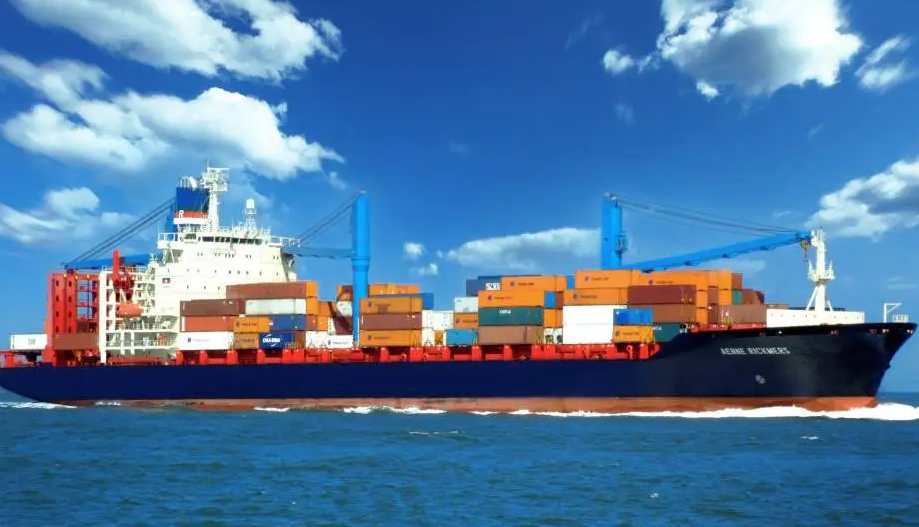Rare plunge in international shipping rates (especially on Asia-Europe shipping routes)
Categories:
Time of issue:
2024-09-20 15:28
Asia to Europe routes are particularly prominent, trans-PacificInternational ShippingThe route is not optimistic. In the face of weak demand, shipping companies are canceling voyages ahead of Asian Golden Week in response to plummeting freight rates. Container freight has entered the off-season, the decline further expanded.
On September 12, the Dreary World Container Freight Index (WCI) composite index fell, falling 13% week-on-week to $4,168 per 40-foot container.
Among them, freight rates on routes from Asia to northern Europe and the Mediterranean fell by 14 per cent and 12 per cent respectively, while freight rates on trans-Pacific routes fell by 15 per cent, with Shanghai-New York falling by 21 per cent to $6,661/FEU.
Deluree said that because of concerns about the potential impact of the International Dockworkers Association (ILA) strike in October, shippers are shifting goods from the east coast of the United States to the west coast, resulting in a decline in demand in the United States.

This led to a significant 21% drop in freight rates in the US Eastern in stock. Because of weak demand, the agency expects east-west freight rates to fall further in the coming weeks.
However, the reasons for the collapse in freight rates are complex and diverse.
Recently, industry experts pointed out that in order to maintain the stability of freight rates, container transportation companies have taken measures to suspend flights before China's National Day Golden Week. Specifically, in the five weeks from early September to early October, the number of flights on major trade routes from Asia to Europe and the United States was significantly reduced.
In particular, the US-East route, affected by multiple factors, has seen a decline in freight rates. On the one hand, the potential strike action in the Canadian railway system and the possible strike launched by port workers in the eastern United States and the Gulf Coast in early October have made customers take a wait-and-see attitude and reluctant to place orders easily. On the other hand, some shippers in urgent need of shipment chose to turn to the US-West route in order to avoid risks.
In addition, the improvement of the navigation conditions of the Panama Canal has also made more ships choose to pass through the canal, further aggravating the downward trend of freight rates on the eastern line of the United States.
In view of the uncertain outcome of the ILA negotiations at the US East Terminal, it is expected that the volume of US East cargo will decrease in the next few weeks, further dragging down freight rates. However, if cargo flows shift to the US-West, it could slow the decline in US-West freight rates and even show signs of stabilization in the coming weeks.
In addition, the slow-down or strike of dock workers will have a profound impact on the supply and demand relationship in the container shipping market. In addition, the supply chain impact of the Red Sea crisis. Once the strike lasts for two weeks, it will take at least two to three months for the terminal operation to resume, and its impact Will spread to the entire shipping network, including shipping schedule and all terminals.
In particular, if the U.S. East Terminal union launches a strike on October 1, a large influx of goods into the U.S. West, a surge in goods and a prolonged time to process goods could lead to supply chain congestion, which could reverse the trend in freight rates and cause them to rise again.
It is reported that Linerlytica analysts said that the reduction in freight demand is the direct cause of the decline in freight rates, and in order to cope with this situation, carriers have to offer discounts to attract shippers.
Some voyages offer special prices. In terms of in stock prices, Maersk opened the 39th week of test cabins in advance. Referring to Shanghai to the laborious quotation of 2600/4400/4400,MSC lowered the offline quotation in late September to 2930/4890. YML lowered its offline quotation in late September to 2650/4650.
In addition, due to the general decline in east-west spot freight rates (except for the transatlantic westbound route) and the sluggish demand for export goods on the eve of China's Golden Week, the peak booking before the factory shutdown this year was significantly lower than in previous years. The early start of this year's shipping season may lead to an early reduction in the flow of Chinese exports.
In response to the impact of the holiday on demand and labor supply, the Division is taking blank sailing measures to adjust capacity appropriately. In order to cope with this situation, it is estimated that in the next five weeks from September 9 to October 13, 20, 24 and 14 OCEAN, THE and 2M alliances will be canceled respectively, and 31 will be canceled outside the alliance.
It is foreseeable that in the future, despite the challenges facing the shipping market, changes in market supply and demand, geopolitics, and shipping company policies are still affecting the direction of freight rates.










